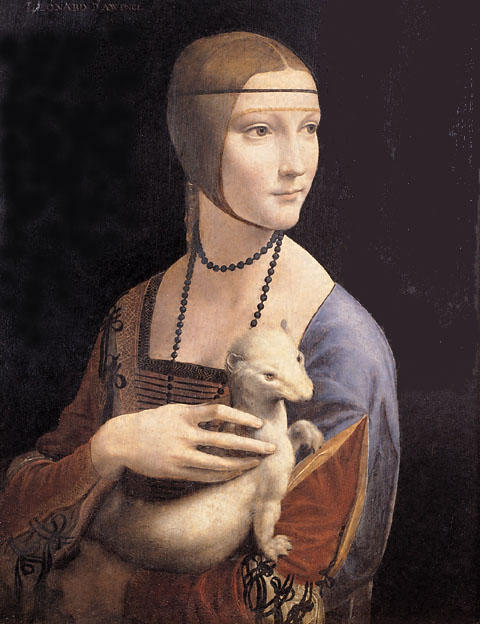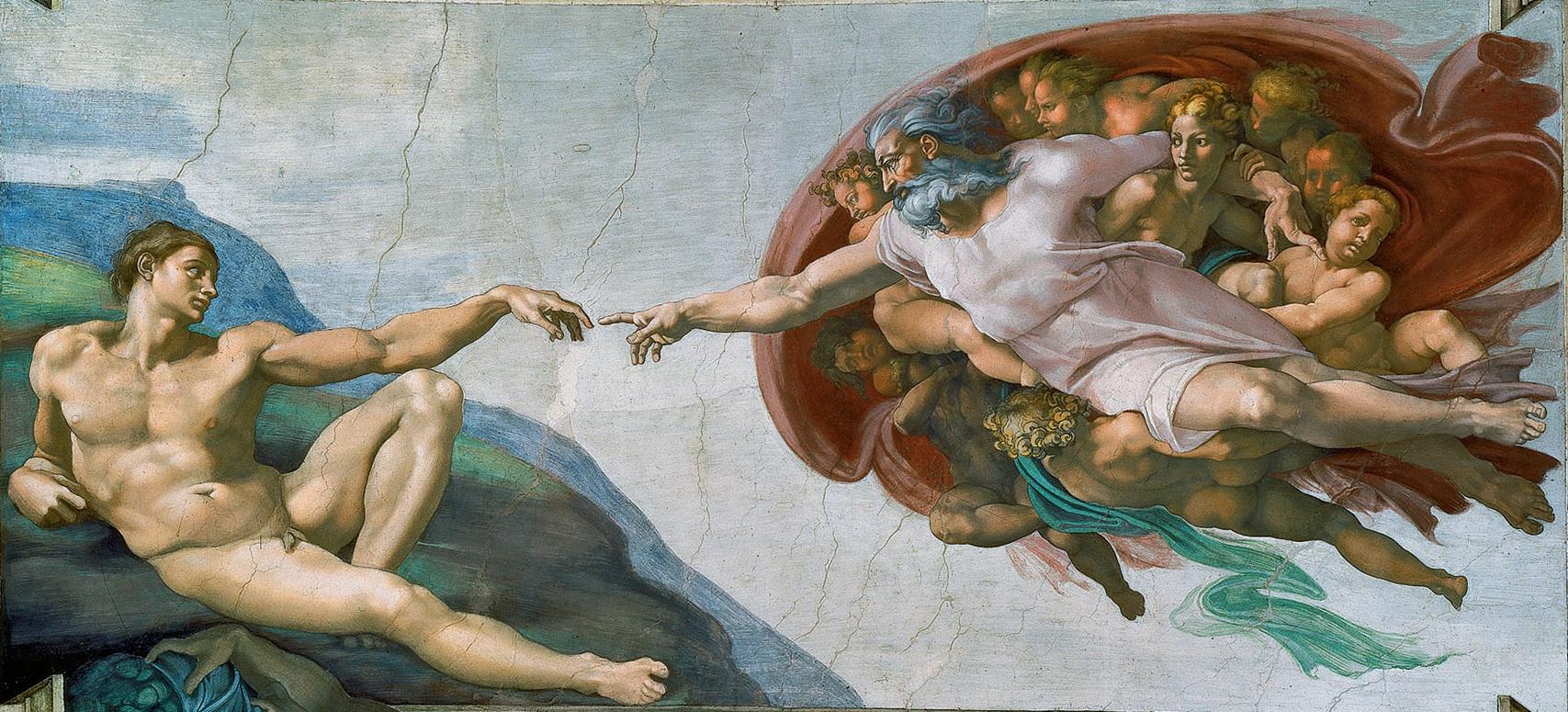Introduction
The historical period of the High Renaissance spanned between 1490 and 1527 and characterizes the culmination of the art of Renaissance, which combined the ideas inherent to classical humanism and the linear artistic perspective inherent to realism. The period of the Early Renaissance was predominantly focused in Florence and was significantly funded by the Medici family; however, Rome was the center for High Renaissance art, which was funded by the Popes. In fact, the lavish founding of the High Renaissance made the city almost bankrupt.
Role of Art in High Renaissance
In the course of the development of the High Renaissance, Rome exceeded Florence due to the ambition of the clergy’s ambitions to reinforce the glory of Rome through art. Pope Julius II and Pope Leo X paid a significant amount of money for the services of the greatest Renaissance artist like da Vinci and Michelangelo to paint various images on religious topics. Thus, the majority of paintings or sculptures inherent to the High Renaissance were not intended for an average citizen, on the contrary, they diminished their value through uplifting the role of the Church (“High Renaissance Art” par. 5).
The realistic depiction of the main objects in the paintings was not entirely intended to present the material world, rather, it aspired to show the beauty and harmony of nature. Despite the fact that High Renaissance artists based their works on nature, they studied the classical works of Greeks and Romans to find the perfect balance, which became the heart of their aesthetics.
Leonardo da Vinci – The Lady with an Ermine
While Leonardo da Vinci was paid a lot to paint images related to religious themes, he was also appointed to paint some representatives of the upper class, like, for example, his painting of Cecilia Gallerani (Figure 1), the mistress of Ludovico, Duke of Milan. She was a daughter of a rich courtier and was described to be “as beautiful as a flower” (Wilson par. 2).

The painting possesses a number of hidden clues that were characteristic of Leonardo’s style. Since he was obsessed with the dynamics of movement, he introduced a new way of painting movement to the style of portraiture. In the painting, Cecilia is depicted in a half-turn, holding an ermine in her arms.
Ermine was regarded as a symbol of childbirth in art; thus, many historians believe that Cecilia was pregnant with Ludovico’s child when Leonardo painted her. Another reference Leonardo made was in the expensive Jet jewels Cecilia wore on the portrait. Ludovico was known under the nickname of ‘the Moor’ for his quite dark complexion. Thus, the black jewels make a subtle allusion to Cecilia’s lover.
When it comes to the specific artistic attributes, da Vinci used an innovative technique of adding dots of white paint to the irises of Cecilia’s eyes, creating ‘catch-lights’. This technique made Cecilia’s eyes alive as if they were reflecting the light from a candle or an open window. In addition, Cecilia has disproportionately large hands for a woman of her age and size. However, this can be explained by the fact that Leonardo practiced drawing hands separate from people’s bodies – he had numerous sketchbooks with hands drawn in different poses. Most likely, Leonardo lifted previously drawn hands from his sketchbook and completed Cecilia’s portrait.
Furthermore, Leonardo used a new method of shading, which was called smokiness. The smokiness can be seen on Cecilia’s chest and neck as subtle gradations of tone, which are typical for the technique. The Lady with an Ermine was painted with a unique medium of oil medium which came from the Netherlands to Italy in the 1470’s. The new medium can be regarded as revolutionary for the country that was captured by the classical method of mural paintings, in which paints were made from egg whites and crushed pigments.
In addition to the new technique, Leonardo used a precious pigment of ultramarine to paint the blue mantle Cecilia had on. The bright blue color was achieved by grinding the semi-precious stone ‘lapis lazull’, mined in Afghanistan, and the shipped to Europe.
The Lady with an Ermine is a painting, which showed Leonardo’s obsession with the art of drawing and the study of nature, evidenced by the detailed depiction of the ermine (Cork par. 6). Cecilia Gallerani came alive in paint, with her sparkling eyes and the folds of her dress, in the moving pose of the animal and the soft shading on her neck.
Michelangelo Buonarotti – The Creation of Adam
In contrast to da Vinci’s portrait, the second painting chosen for analysis, is Michelangelo’s The Creation of Adam, the most known fresco in the Sistine Chapel. Again, the fresco is different from the usual scenes that depict the Creation. God, on the right, is depicted inside a nebula that is made up of many figures of people. Furthermore, God is shown as an elderly man with a gray beard. The image of God is quite remote from the traditional images in which he wears royal garments – in the painting he only wears a light tunic that exposes his legs (Figure 2). Thus, it can be argued that Michelangelo’s depiction of the Creator is much more intimate as he is not unreachable and untouchable to a simple man, but a God that is accessible (“Michelangelo’s Creation of Adam” par. 2).

On the other hand, Adam on the left is shown as a figure that responds to the touch of God. This touch can be regarded as a symbol of life which God first gave to Adam and then to the mankind overall. The shape of Adam’s body is reflective of God’s shape, which implies an idea that Man was created as an image of God – an idea which, supposedly, was supported by Michelangelo.
The Creation of Adam is instrumental in showing the main principles inherent to Michelangelo’s style of painting: the depiction of muscular bodies that twist in the movement, the juxtaposition of the images of the divine and the man, the painting of the bodies that look like live sculptures because Michelangelo was initially specializing in sculpture and had profound knowledge on the structure of the human body.
Due to the fact that Michelangelo was indeed a sculptor, there is an interesting allusion to the science of Anatomy. The nebula which surrounds God is reminiscent of a human skull and the nervous system. Through tracing imaginary lines of a frontal and temporal lobe of a human brain onto the nebula, it can be shown that the nebula is an anatomically correct representation of a human skull (Meshberger 3).
Comparative and Contrastive Analysis
The chosen artistic works of Leonardo da Vinci and Michelangelo Buonarotti are different in their techniques, themes, and ideas. While Leonardo’s the Lady with an Ermine is a portrait of a mistress of the Duke of Milan, Michelangelo’s theme is connected with the Creation of Man by God. While Lady with an Ermine was painted with an innovative medium of paint, the Creation of Adam reserved to a traditional fresco method.
However, both works of art included hidden messages that were to be disclosed. Leonardo presented his knowledge of hidden symbols as evidenced by the image of the ermine that suggested Cecilia’s pregnancy. Michelangelo also followed his aesthetic as a sculptor and connoisseur of the human anatomy, hiding an outline of a human skull in the composition of the fresco.
Thus, the ways in which the paintings are perceived by the viewer are polarly different. The Creation of Adam is seen as a scene of interaction between the divine deity and a man, reinforcing the creationist beliefs inherent to the majority of religions. In addition, the fact that the fresco is located on the high ceiling of the Sistine Chapel, the observer may have a feeling of being small and powerless compared to God.
Lady with an Ermine, on the other hand, presents a much more realistic theme of a higher class. It brilliantly serves a time capsule for the modern society that is able to see the contrast between the way the members of the high class looked in the fifteenth century and the way they look today.
Works Cited
Cork, Richard. Leonardo da Vinci’s Masterpiece ‘The Lady With the Ermine’. 2013. Web.
High Renaissance Art. n.d. Web.
“Leonardo da Vinci – The Lady with an Ermine” n.d. Web.
Meshberger, Frank. An Interpretation Of Michelangelo’s Creation Of Adam Based On Neuroanatomy. 2011. Web.
Michelangelo’s Creation of Adam. 2012. Web.
Wilson, Andrew. Decoding a da Vinci masterpiece: Behind the Secret Symbols of The Lady With An Ermine. 2011. Web.